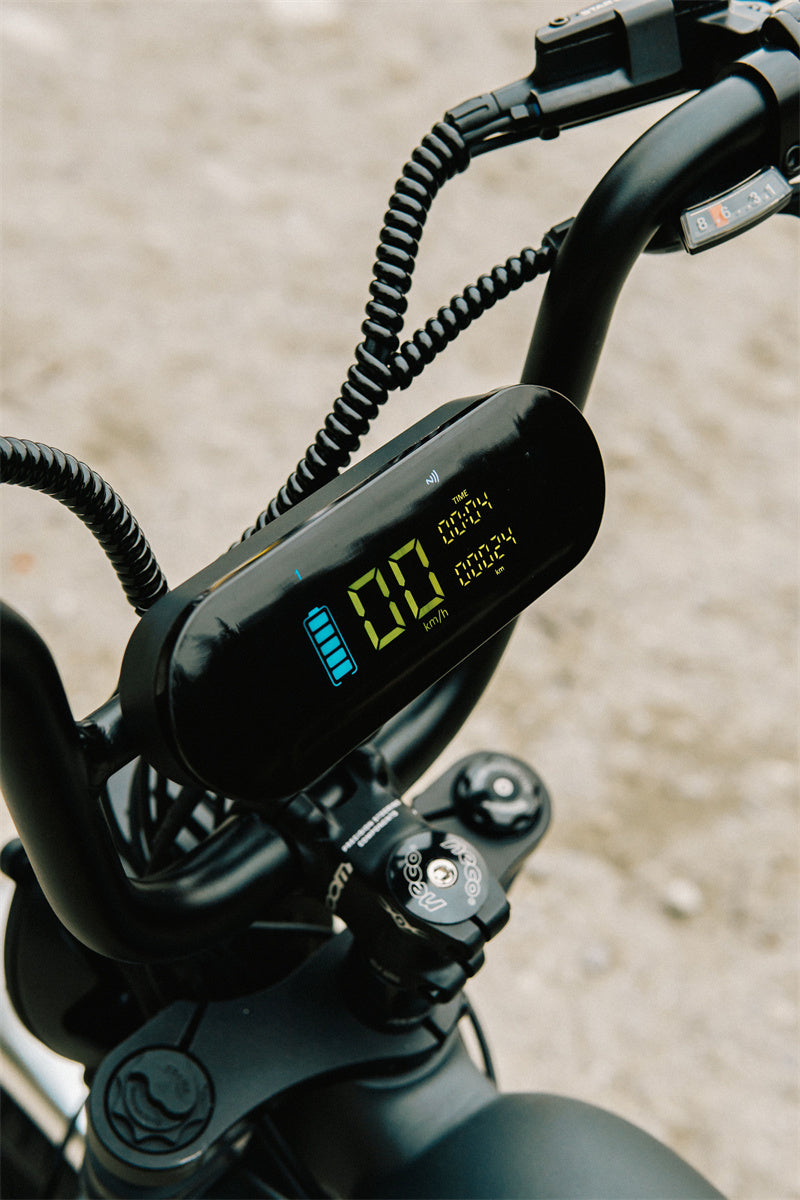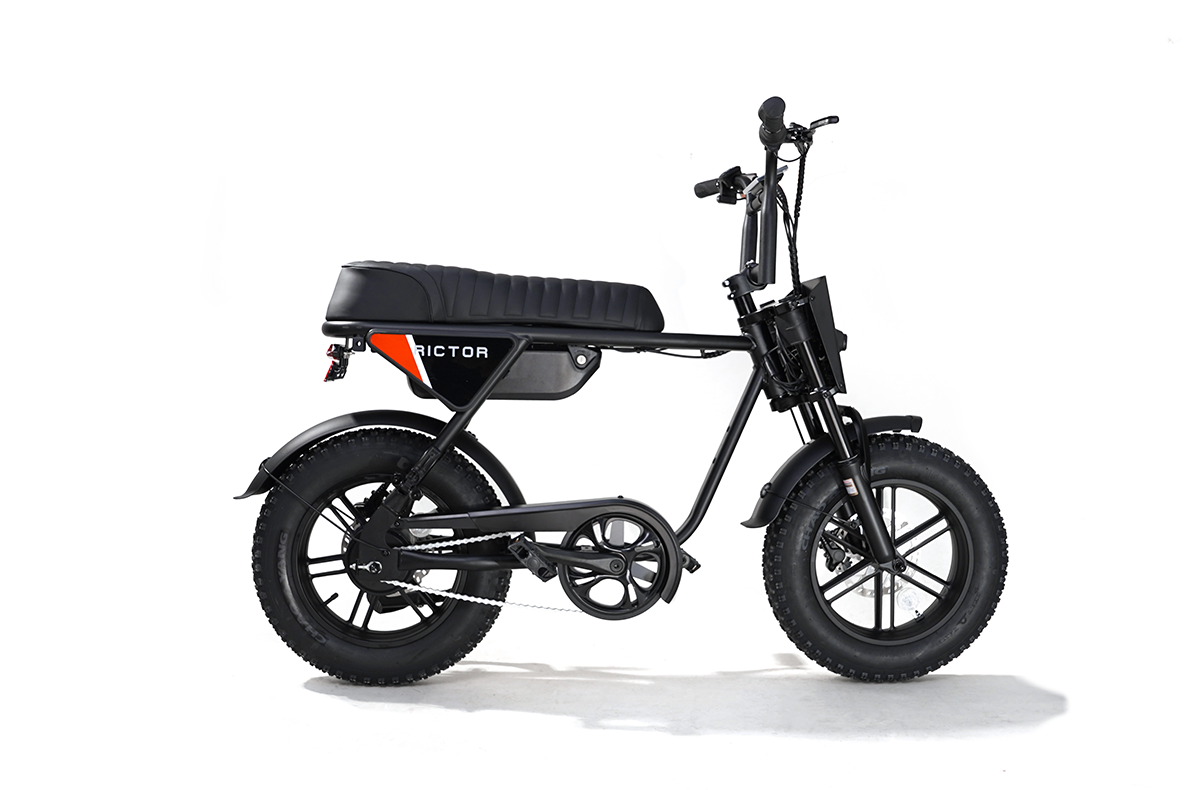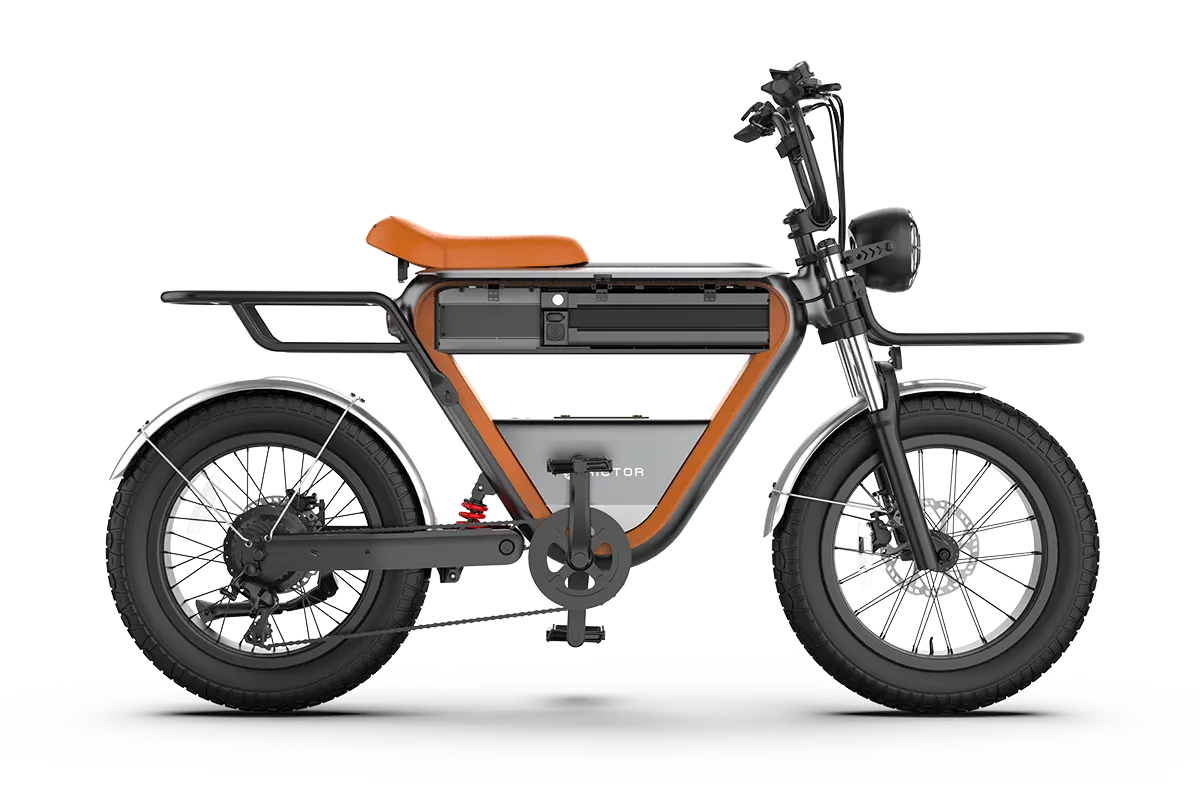
Why Do Electric Bike Only Go 28 MPH?
Picture this: No traffic, no obstacles, just pure, open space stretching out before you.
The thrill builds as you accelerate, feeling every bit of speed as you approach 28 mph.
You’re ready to push harder, to feel the bike surge beneath you and reach its peak.
Even maintaining 28 mph feels like a temporary boost, something that lasts only for a short stretch before the e-bike naturally eases back.
Yep, there’s a speed limiter built into electric bikes, keeping them from going any faster. But why exactly is 28 mph the maximum?
The RICTOR K1 electric bike is designed with a maximum speed of 28 mph (approximately 45 km/h)
What Makes Up an Electric Bike
Motor: The motor generates the additional power needed for riding, particularly helpful on steep inclines or during long rides.
Battery: The battery stores the energy required to operate the motor and directly affects the bike’s range and top speed.
Controller: The controller manages the flow of power from the battery to the motor, allowing for adjustments in speed, acceleration, and overall performance.
Riding an e-bike at speeds over 28 mph—it’s like speeding down the street on a bike with the force of a fast scooter or a small motorcycle. At this speed, you’re moving almost as fast as a residential car on neighborhood streets.

E-Bike Classifications in the U.S.
In the United States, e-bikes are grouped into three distinct classes.
Class 1: Provides pedal assistance only, up to a maximum speed of 20 mph. This class does not have a throttle.
Class 2: Equipped with a throttle, allowing for motorized assistance without pedaling, also limited to a top speed of 20 mph.
Class 3: Offers pedal assistance up to 28 mph, with no throttle. These are typically used for commuting and are subject to additional restrictions on certain paths and trails.
SEE ALSO How Fast Does an Electric Bike Go?
Why Is the Speed Capped at 28 MPH
An electrci bike rider zips through a busy intersection at nearly 30 mph, only to lose control on a sudden bump.
In a split second, the rider is thrown off the bike, colliding with the pavement. High-speed electric bike accidents like these have become more common as riders push their bikes beyond safe limits.
In New York City,reports of severe electrci bike accidents have been on the rise, with speeds exceeding 28 mph contributing to dangerous outcomes.
Safety
Structural Limits
Electric bicycle though more robust than regular bicycles, are still lighter and less structurally reinforced than motorcycles or cars.
At speeds over 28 mph, the frame, wheels, and other components can face stress that they weren’t originally designed to handle.
Handling and Braking
The higher the speed, the more distance it takes to brake safely.
With a 28 mph limit, e-bike brakes can operate within their safe threshold, keeping riders in control and reducing the chance of accidents.
Injury Risk
Higher speeds correlate with increased injury risk in the event of an accident.
Studies have shown that even a 5-10 mph increase in speed can raise the severity of injuries.
By keeping the limit at 28 mph, manufacturers are looking to minimize the risk to riders, who typically don’t wear as much protective gear as motorcyclists.

Legal Classification of Electric Bikes
The 28 mph limit also stems from regulatory frameworks set by governments,hich classify electric bike s differently than other motorized vehicles.
In the United States, for example, Class 3 electrc bikes are legally defined as pedal assist bikes that can go up to 28 mph with the help of an electric motor.
By staying within this threshold, e-bikes avoid being categorized as mopeds or motorcycles, which would require licensing, registration, insurance, and more rigorous safety equipment.
Different countries have unique regulations for electricbike speeds. In the European Union, the limit is typically 25 km/h (about 15.5 mph), while in Canada, it’s generally 32 km/h (around 20 mph).
By capping speeds at 28 mph, manufacturers can offer models that are easier to adapt for a wider global market.
By keeping e-bikes within this speed category, riders can avoid the need for a driver’s license or special permits, making e-bikes more accessible to a broader audience, including teenagers and those who might not drive otherwise.
Battery Life and Efficiency
Speed affects battery life more than you might think.
The faster you go, the more energy the motor uses. As speed increases, the power demand grows exponentially, which means the battery drains much quicker.
At 28 mph, e-bikes can cover a decent range without sacrificing too much battery life.
Batteries generate heat when they work hard. Pushing an e-bike motor to constantly maintain speeds over 28 mph could lead to overheating, which can reduce battery efficiency over time or even damage the battery cells in the long run.
E-bikes are designed to cover longer distances on a single charge. At speeds over 28 mph, you’d need to recharge more often, which limits the e-bike's appeal as an efficient, hassle-free commuter option.
FAQs
Do you need a license to ride an electric bike?
In most regions, e-bikes that stay within the speed limit of 28 mph (Class 3) do not require a license or special permits. This makes them accessible for a wider range of riders.
How does the motor contribute to the e-bike's performance?
The motor provides additional power, making it easier to ride on inclines or long distances. It enables pedal assistance up to the designated speed limit, helping riders maintain consistent speeds with less physical effort.
Can I modify my e-bike to go faster than 28 mph?
While it’s technically possible to modify an e-bike, increasing the speed beyond 28 mph can void warranties, break local regulations, and compromise safety. Most e-bikes are optimized for this limit, and modifications can strain components beyond their designed capabilities.




